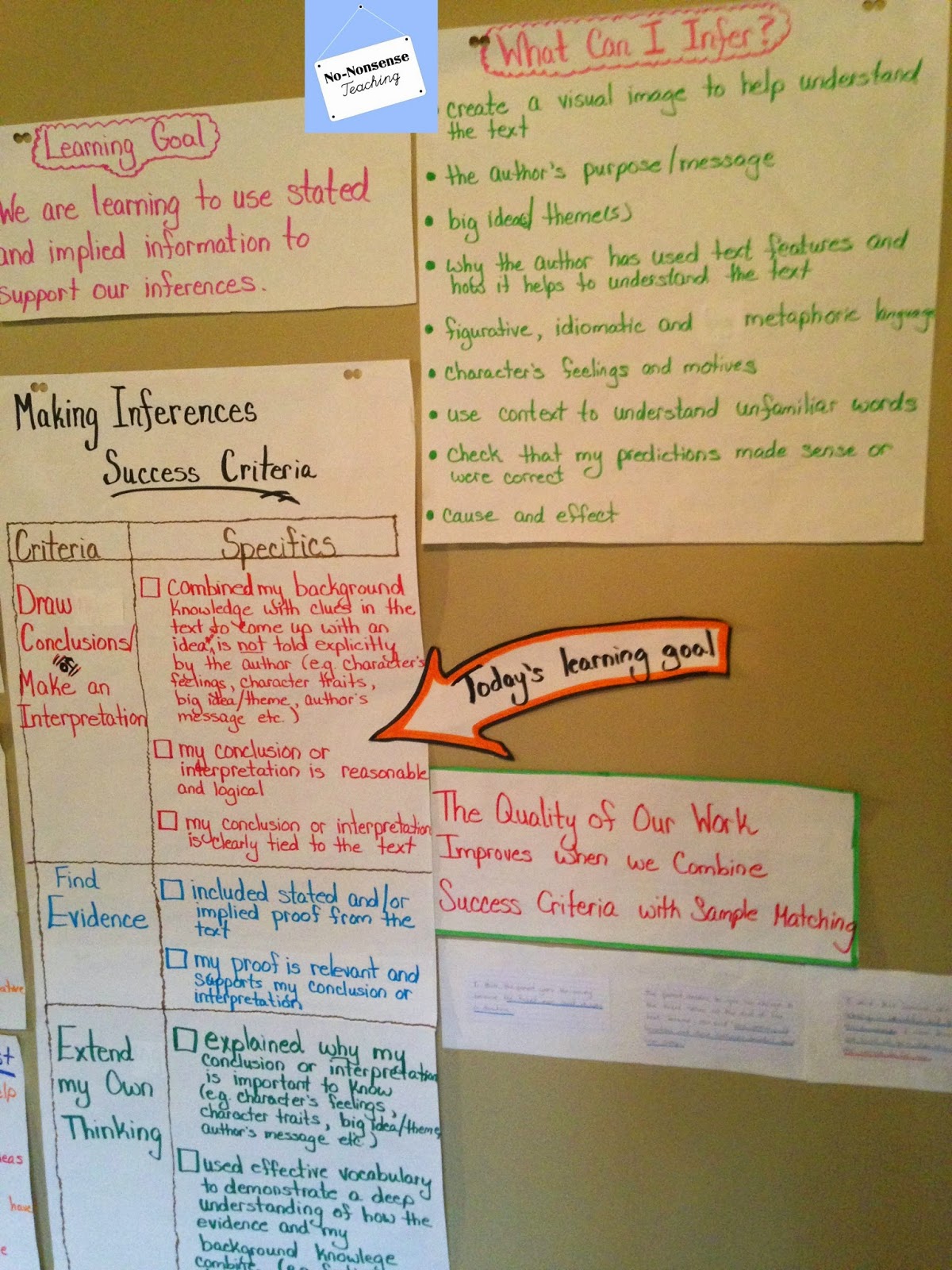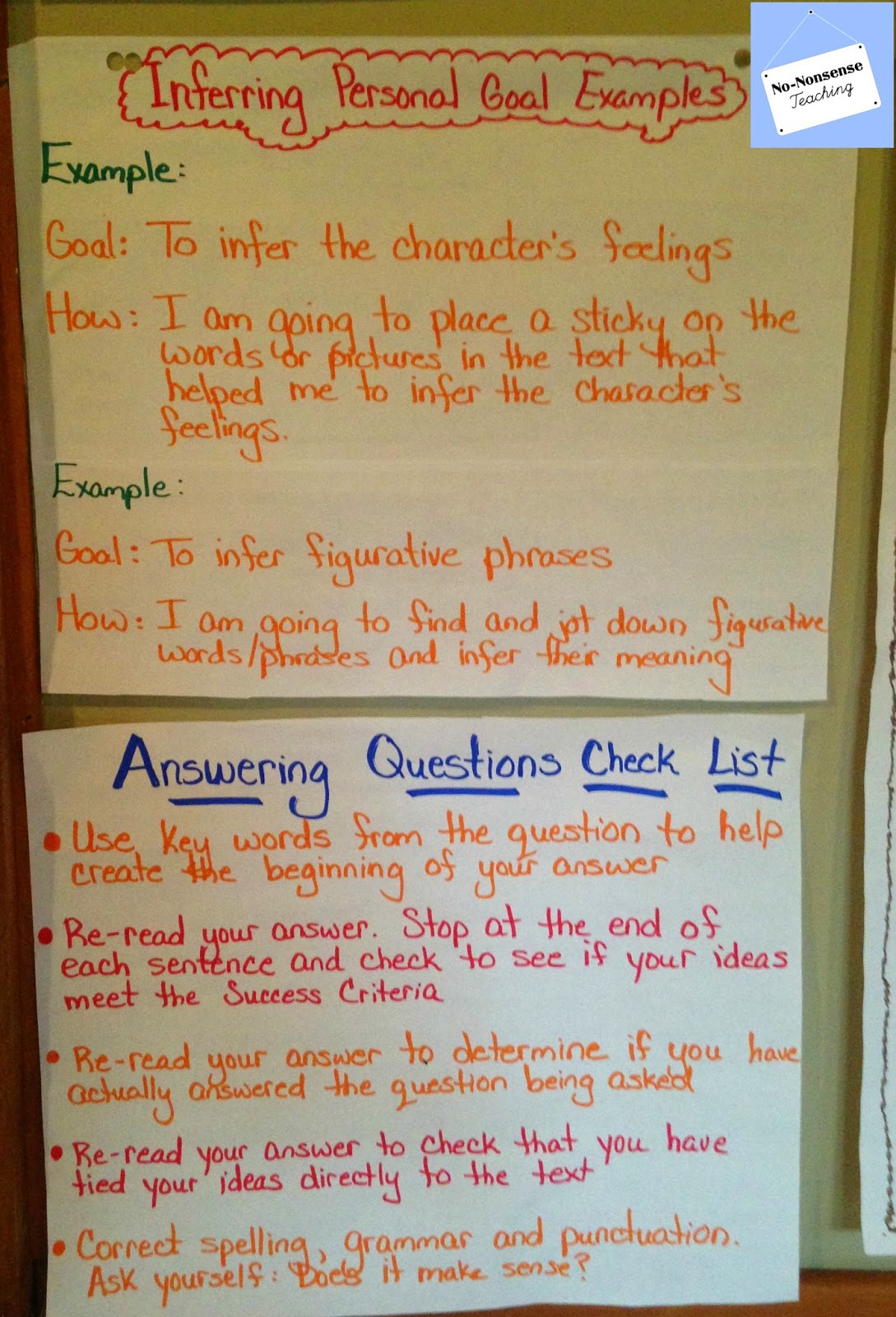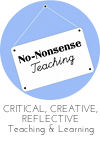1. Begin by conducting reading comprehension diagnostic assessments. Share the results of the assessments (names hidden) with your class. Discuss and decide as a class which reading comprehension strategy to incorporate into reading lessons (why we are learning). Including children in decision making results in a higher level of overall engagement.
2. Based on the class decision and reading curriculum expectations, create a learning goal with your class. Children will provide input into the wording of a learning goal based on diagnostic assessments and curriculum expectation (what/why we are learning). Children will require support and guidance on how to merge the two into one learning goal. The learning goal becomes meaningful to children as they created the wording together. Post the learning goal on the wall.
3. Create a success criteria with the class (what/how to be successful). Again, the wording of the criteria should reflect the class' input. Post criteria above or next to the learning goal.
4. With children, create supporting anchor charts to describe what this comprehension strategy 'looks like' and 'sounds like' (how to be successful). Anchor chart supports will include sentence starters, related vocabulary, meta tags, graphic organizers, helpful strategies to use while working independently etc. Post these supports around the learning goal and criteria.
5. The specific daily learning goal for comprehension should be taken straight from the success criteria. This will make an explicit connection between the lesson and the success criteria for learners.
By thinking carefully about the organization of wall charts, your learners will have many of the tools they need to achieve success.
Look for useful resources at my TpT store:
http://www.teacherspayteachers.com/Store/No-nonsense-Teaching




























No comments:
Post a Comment